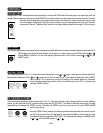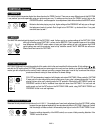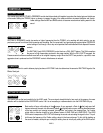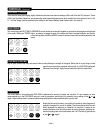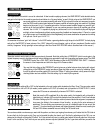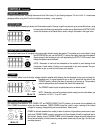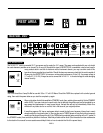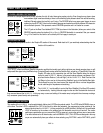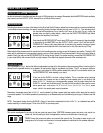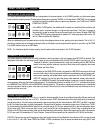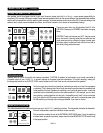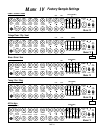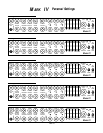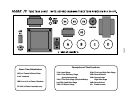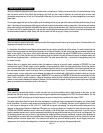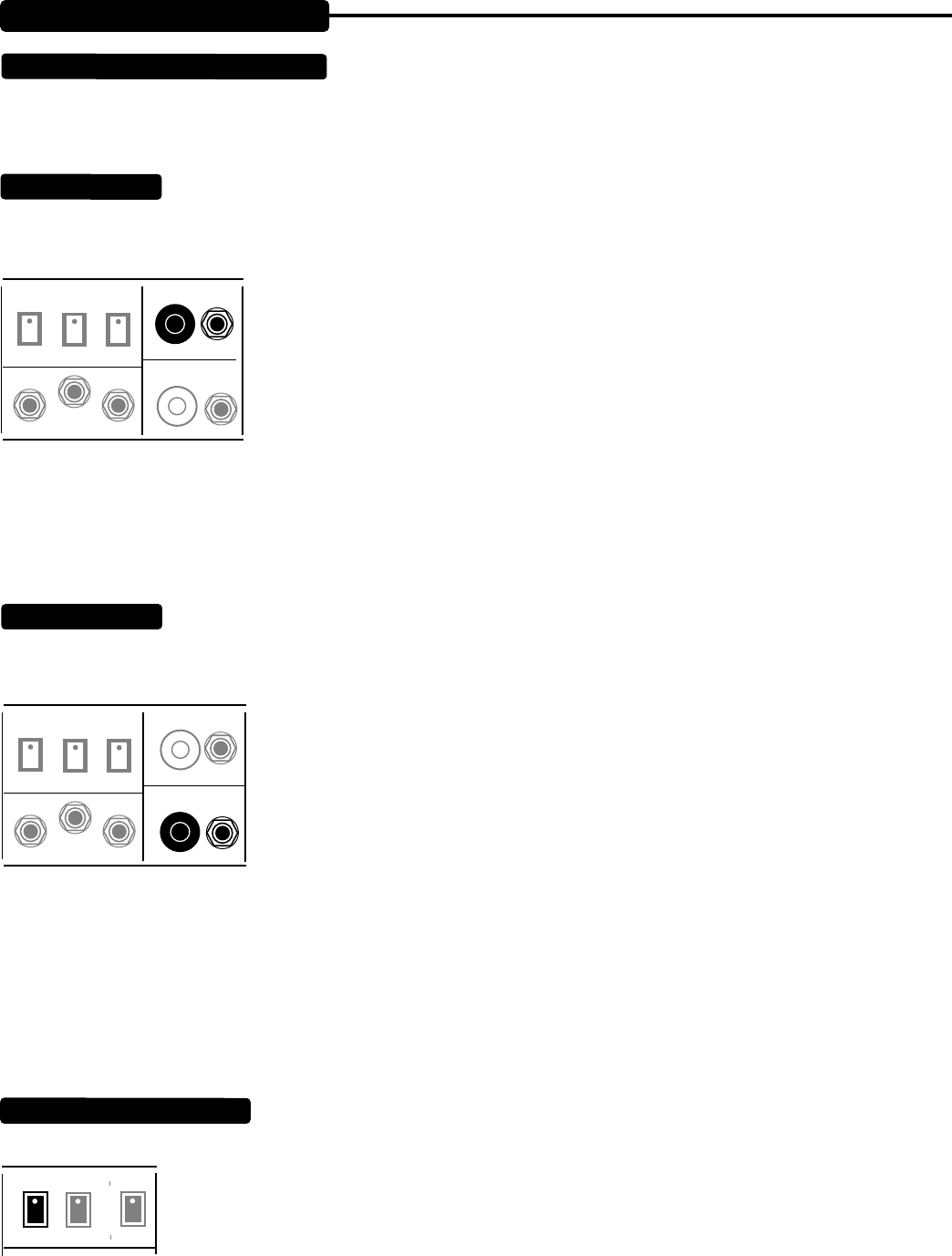
PAGE 11
be able to footswitch in the effects mid-way through a LEAD mode solo, for example. Remember that the MASTERS double as effects
send controls and the OUTPUT LEVEL also works as an Effects Return control.
Following the enormous success of this feature in the Quad and Studio Preamps, where they’ve been used on numerous professional
- and countless home recordings, this proven recording circuitry has been included into your new MARK IV. This recording circuit
can be used while performing live or silently at all hours of the night. Do not unplug the
speaker when you wish to record silently - merely use the SILENT RECORDING pull switch
(located on the amplifiers Front Panel).
Even though the RECORDING OUT has its own LEVEL control, the amount of signal available
is determined by the MASTERS and the OUTPUT LEVEL control. You’ll find that the RE-
CORDING OUT does a pretty remarkable job of simulating the complex functions of power
amp, speakers and microphone while at the same time in very little need of any EQ’ing.
Notice also that the presence controls are inactive in the recording process, as they are part of the power amp section. The built-in EQ
works well for adjusting tonal nuances when recording and your mixing board’s EQ may also be helpful, though not much of either is
needed. Finally, you may use the RECORDING OUT for driving the p.a. directly. For stereo recording, connect the RECORDING OUT
to your stereo effect, then connect the left and right outputs of the effect into separate channels of the recording mixer.
This is a traditional Boogie feature that offers an adjustable-level signal for driving external slave power amplifiers. Here the signal is
derived from the speaker terminal, so a speaker (or load resistor) must be connected at all times! The D.I. can also be used as a
feed to a p.a. but quite a lot of EQ’ing will be needed at the board. For much better results, use
the RECORDING OUT when feeding a p.a. board.
A final use for the SLAVE is to drive a string of effects. This is a complex set-up requiring
another power amp (stereo) and two, or better yet three speaker cabs. In this hook-up the
entire MARK IV functions as a tone-generating preamp, with the output taken from the
SLAVE D.I. and fed into the effects string. The output of the last effect is then used to drive a
stereo power amp - such as our 50/50 Stereo or Stereo Simul-Class Two Ninety power
amps - which in turn would power a pair of speakers.
Remember, the speaker jack of the MARK IV must be loaded by either a power-soak type resistor (which alters the tone badly)
or an actual speaker. This “middle” speaker will provide a dry or un-effected sound and is sometimes just a single 12 hidden under the
stage.
NOTE: Once signal is taken from the SLAVE D.I. Output, it cannot be inserted back into the MARK IV as a feedback loop will be
created resulting in a terrible squeal. Think of the SLAVE as a one way send.
This switch reconfigures the circuitry for the two outer-end power tubes. PENTODE increases power and punch, and results in a
harder clip. Use this setting for loud, live applications such as un-mic’ed blues or country gigs.
TRIODE lowers the power and softens and smooths the onset of clip. This makes it easier to get a rich
singing sound full of sustain and harmonics, but some headroom is sacrificed for this sweeter response.
REAR VIEW MKIV
(Continued)
EFFECTS LOOP SECTION: (Continued)
RECORDING OUT:
RECORDING
SLAVE (D.I.)
LEVEL OUT
2
3
4
5
6
7
8
9
1
0
10
AUTO
RHY 2
AUTO
RHY 1
FX LOOP ON
FULL TIME
FX LOOP
SWITCHING
RHY 2
LEAD
AUTO ASSIGN SWITCHES
FX SEND
RETURN
RETURN
LEFT
(STEREO)
RIGHT
(MONO)
2
3
4
5
6
7
8
9
1
0
10
SLAVE OUT (D.I.):
RECORDING
SLAVE (D.I.)
LEVEL OUT
2
3
4
5
6
7
8
9
1
0
10
AUTO
RHY 2
AUTO
RHY 1
FX LOOP ON
FULL TIME
FX LOOP
SWITCHING
RHY 2
LEAD
AUTO ASSIGN SWITCHES
FX SEND
RETURN
RETURN
LEFT
(STEREO)
RIGHT
(MONO)
2
3
4
5
6
7
8
9
1
0
10
TRIODE / PENTODE SWITCH:
POWER AMP
TRIODE SIMUL-CLASS HARMONICS
PENTODE
CLASS A
MID GAIN
LEAD VOICING



